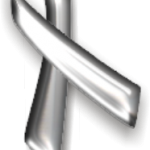Once again it is October, National Breast Cancer Awareness Month, and the pink is out in full force. Cosmetics feature pink ribbons on their cases and pink energy drinks, yogurt and soda proclaim how much money they will give to the pink ribbon campaign if only you purchase these products. Pink ribbons can be found on shirts, hats and sneakers. Car stickers state “Save the Tatas” and “Squeeze Your Boobies”, but what has the pink ribbon campaign done for women?
Well, it has raised millions of dollars. It has lots of women and even the men of the NFL wearing pink. We have learned who is most at risk for breast cancer, we know how to do the breast self exam and women have been encouraged to get mammograms earlier and more often.
What hasn’t the pink ribbon campaign done? It has not contributed to finding a cure. It has not helped decrease the number of women diagnosed with breast cancer. Since Susan G Komen For the Cure was founded in 1982 and the pink ribbon campaign began in 1991-1992, breast cancer rates have steadily risen.
Where does the money go? Well of every dollar raised by Susan G. Komen For the Cure, about 20 cents of it goes to research. Let’s look at the big picture. Five Hour Energy states this year they will donate a minimum of $75,000.00 to the fund. So 20% of that is $15,000 that will go into actually fighting cancer. Much of the money they raise pays the CEO, employees, administrative fees and printing and distributing pamphlets. Their name includes the words “For the Cure” and yet 80% of their money goes to other expenses!
I believe buying pink doesn’t fight cancer. In fact, it could contribute to it. Many corporations that partner with the pink ribbon campaign use known carcinogens (cancer causing ingredients) in their products that feature the pink ribbon. This is true for both cosmetics put on the body and food and beverage products put inside the body.
Don’t believe me, check it out for yourself. You can visit Think Before You Pink and see for yourself the message from those trying to fight cancer without wasting funds and poisoning bodies. The documentary Pink Ribbons, Inc. directed by Lea Pool and available on Netflix demonstrates how pink ribbons have benefited marketing rather than medicine.
Please recognize that I am not dissing survivors and those currently coping with a cancer diagnosis. And maybe the pink ribbon campaign is not even the worst offender. There are many cancer charities with questionable spending. The American Institute of Philanthropy rates charitable organizations on the efficiency with which they use funds and for some organizations breaks down the amounts that actually go to the cause instead of CEO salaries and employee pension plans. Their website found at Charity Watch is one place to start your education.
I am all for empowering women, but we need to empower ourselves through real information and not just buying into hype.
Submitted by Leanne Breiholz
Think Before You Pink
October 11, 2013 By Leave a Comment



 GBP Showcase: The Tilt Shifts Reality
GBP Showcase: The Tilt Shifts Reality









Recent Comments